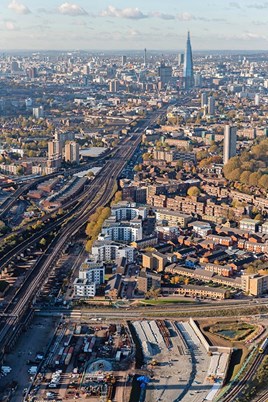All of this serves to illustrate Shaw’s contention that there’s no perfect structure to optimise track and train geography.
In addition to NR running a central system operator and technical authority (see panel), Shaw recommends that the company holds a route services directorate that can use bulk purchasing power to cut costs to devolved routes. It should also co-ordinate scarce resources - this might be yellow plant or high-capacity rail cranes that a route on its own could not justify holding.
This directorate need not own kit (although it could), as private operators might be better placed to provide tampers or flash-butt welding machines (for example), much as they do today. Services from the directorate should be available to all NR’s routes, whether they are under direct management or contracted out under a concession. They should also be available to other infrastructure managers, such as for HS1 or HS2.
The route services directorate could include NR’s Infrastructure Projects team, on the basis that it acts as a contractor to routes. On this basis, a route could use IP to deliver projects, or deliver them itself, or use a contractor from outside NR. The choice should depend on costs and delivery.
Giving routes more choice in how they maintain, renew and enhance their tracks could put NR back on the road to increased efficiency, following a halt in progress around 2012. NR had made impressive improvements in efficiency in the years before 2012 - since 2003/04, it has posted operating, maintenance and renewal (OMR) efficiencies of around 37%, according to Shaw, but since 2012 has dropped back to become slightly less efficient. Despite this, NR’s draft business plan for 2014-19 predicted further improvements of 16%, although the company is falling behind this ambition.
The money NR can spend (and its efficiency targets) come from the ORR, which develops them from its Periodic Review of access charges. ORR does this every five years, and is just beginning the process that will result in the figures for 2019-2024. Shaw recommends that ORR conduct this next review on a route basis, to set regulated outputs, spending and revenue. This could mean that ORR can stop trying to measure NR against foreign railways and instead measure NR’s routes against each other. However, ORR will need to guard against route directors setting short-term targets that will reflect well on their individual tenures rather than the railway’s longer-term good.
Further changes could come to the routes if the Government decides to pursue Shaw’s recommendations that it sells concessions to operate, maintain and renew routes. Shaw has some experience here as chief executive of High Speed 1, which is the concessionaire for the Channel Tunnel Rail Link from St Pancras to the tunnel at Cheriton.
However, this railway is very different from the rest of the network, in being relatively new and with a good knowledge of its condition. NR (and Railtrack before it) has been continually criticised for its lack of asset knowledge, which brings risk for anyone taking over any of these assets. You might commission a survey before buying a house - it’s harder to survey a route to a level needed to satisfy investors looking for low-risk homes for their money.
Structural problems have closed the West Coast Main Line, Newcastle-Carlisle and Alton lines in recent months, while landslides continue to keep the Settle-Carlisle (partially) and Dover-Folkestone routes closed. Then there are the problems of incomplete or lost records; buried cables of uncertain whereabouts or use; or cables that must be there somewhere, but no one knows where… until they are struck and severed. This is one of the problems that led to rising costs as NR electrifies the Great Western Main Line.












